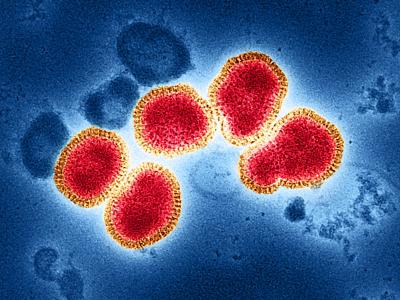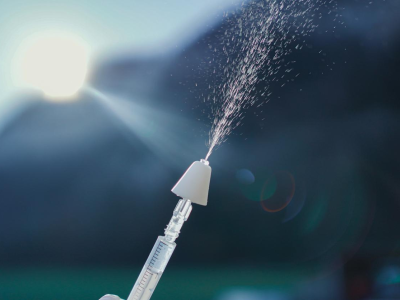Case series: Mild illness, good outcomes in infants hospitalized with COVID-19
A small single-center case series published today in Pediatrics describes only mild illness in seven hospitalized infants in New York City with COVID-19 and fever, with none requiring supplemental oxygen, mechanical ventilation, or intensive care.
Columbia University researchers conducted a mixed retrospective and prospective study of infants 60 days old and younger (range, 11 to 56 days) hospitalized from Mar 1 to Apr 15 with confirmed infection with SARS-CoV-2, the virus that causes COVID-19.
In three of the seven infants (43%), fever was the only symptom at hospital admission. None of the newborns were ill or in respiratory distress. Two infants had underlying Escherichia coli urinary tract infections (UTIs), but it was not clear whether their fever was a result of the UTI or coronavirus infection.
Median hospitalization length was 2 days. None of the newborns were readmitted by 7 days, but one infant was hospitalized again at 14 days for fever and again tested positive for COVID-19 but was later released.
"Our result, although based on small numbers, suggests that infants with SARS-CoV-2 generally have mild presentations, similar to typical viral illness with other coronaviruses," the authors wrote. "This benign clinical course was also observed for the 2 infants in our study with underlying medical illnesses."
Aug 6 Pediatrics case series
Penicillin allergy delabeling linked to more appropriate antibiotic use
A combination of direct delabeling and oral penicillin challenge in patients with reported penicillin allergies resulted in improved antibiotic prescribing at two Australian hospitals, Australian researchers reported yesterday in Clinical Infectious Diseases.
In the study, patients with a reported penicillin allergy were offered a single-dose oral penicillin challenge or direct removal of the penicillin allergy label based on their history. The primary end point of the study was the proportion of patients delabeled. The secondary end points were the use of narrow-spectrum penicillins, restricted antibiotics, and appropriate antibiotics in delabeled patients compared with both the pre-testing period and non-delabeled patients.
During the study period (January through August 2019), investigators at the two hospitals assessed 1,779 patients reporting 2,135 allergies and found 1,272 with a penicillin allergy. Of the 1,225 patients analyzed, 355 were delabeled: 161 by direct delabeling and 194 by oral challenge. Ninety-seven percent (194 of 200) of patients were negative upon oral challenge.
In the delabeled patients, the investigators observed an increase in narrow-spectrum penicillin usage (adjusted odds ratio [OR], 10.51; 95% confidence interval [CI], 5.39 to 20.48), improved antibiotic prescribing (adjusted OR, 2.13; 95% CI, 1.45 to 2.13), and a reduction in restricted antibiotic usage (adjusted OR, 0.38; 95% CI, 0.27 to 0.54) in the post-testing period compared with the pre-testing period.
In the propensity score analysis, they noted an increase in narrow-spectrum penicillins (OR, 10.89; 95% CI, 5.09 to 23.31) and beta-lactam/beta-lactamase inhibitors (OR, 6.68; 95% CI, 3.94 to 11.35) and a reduction in restricted antibiotic use (OR, 0.52; 95% CI, 0.36 to 0.74) and inappropriate prescriptions (relative risk ratio, 0.43; 95% CI, 0.26 to 0.72) in the delabeled group compared with the patients who retained their allergy label.
"Our study in hospitalized inpatients demonstrated, at an individual and propensity-adjusted level, a dramatic increase in appropriate and narrow-spectrum penicillin use in those delabeled, without an increase in total antibiotic consumption," the authors of the study wrote. "The strategy provided here should enable clinicians globally to implement and incorporate similar antibiotic allergy delabeling programs into their health service as a novel medication safety and AMS [antimicrobial stewardship] intervention with minimal additional resources."
Aug 5 Clin Infect Dis abstract
German data show significant drop in pediatric antibiotic prescribing
An analysis of national outpatient antibiotic prescribing data in Germany shows a significant reduction in antibiotic prescribing for children and adolescents over the last decade, German researchers reported today in Eurosurveillance.
In a cross-sectional analysis of annual antibiotic prescription rates among insured children ages 0 to 14 from 2010 through 2018, researchers from Germany's Central Research Institute of Ambulatory Health Care found that the age-standardized antibiotic prescription rate fell by 43%, from 746 prescriptions per 1,000 people in 2010 to 428 per 1,000 in 2018 (P < 0.001). The highest reductions were observed in children ages 0 to 1 (49%) and 2 to 5 (44%). The 2-to-5 age-group had the highest prescription rate, with 683 prescriptions per 1,000 people in 2018, while children ages 10 to 14 had the lowest, with 273 prescriptions per 1,000. Rates declined strongly in all regions of the country.
With the exception of penicillins with a beta-lactamase inhibitor, prescription rates of all antibiotic subgroups decreased markedly. But second- and third-generation cephalosporins accounted for 32% of prescribed antibiotics, which is high compared with other European countries.
The authors of the study say the reductions may have been driven by rising public awareness of antibiotic resistance in Germany, an increasingly critical view of the use of antibiotics, and an increasing focus on judicious prescribing among German physicians. But they also note that there is room for improvement, as the antibiotic prescribing rate in German children remains roughly 70% higher than it is in Norway and the Netherlands.
Aug 6 Eurosurveill study













